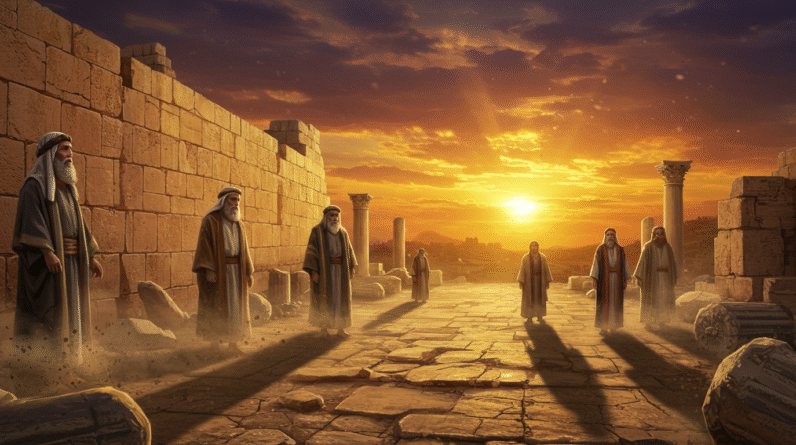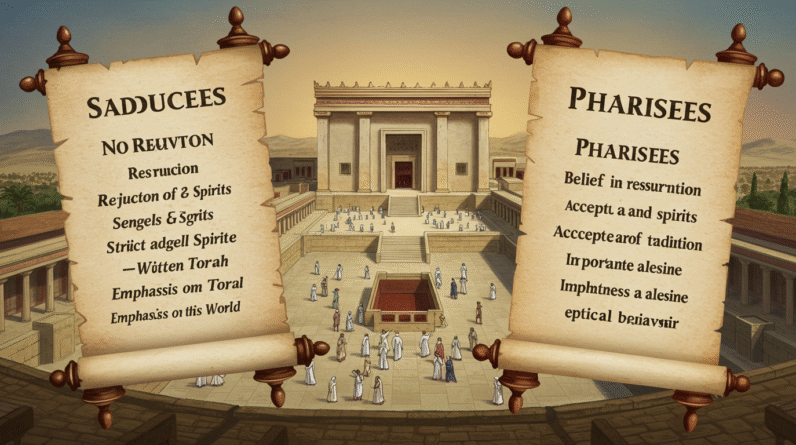Explore the pivotal moment of spiritual transformation at Mount Sinai in Exodus 19, where divine authority meets human vulnerability, shaping faith and obedience today.

The Assembly At Mount Sinai – Exodus 19
The story of Mount Sinai is an extraordinary narrative within the Bible, illustrating a pivotal moment in the spiritual journey of the Israelites. The assembly at Mount Sinai marks a defining covenant between God and His people, Israel, with its profound laws and regulations that continue to resonate even today. This majestic gathering serves as a canvas showcasing faith, obedience, and transformation. It’s a moment laden with divine promises and human vulnerability, a profound intersection of the sacred and the ordinary. Here, you will unwrap the depth of the events at Mount Sinai, facilitated by Exodus 19, where spiritual and earthly realms converge with divine authority.
Arrival at Sinai
The story begins with the arrival of the Israelites in the desert of Sinai precisely three months after they depart from Egypt. Here, God emphasizes His intentions and transformational plans for them. This development culminates in one of the most significant spiritual encounters in history, as illustrated in Exodus 19:1-2. The linear journey from slavery to freedom echoes the internal journey towards faith; it reveals that entering a place of promise often involves traversing a wilderness – a universal truth that speaks to personal transformation.
God’s Message to Moses
Moses, the revered figure and leader of the Israelites, is charged with the task of ascending Mount Sinai to receive God’s instructions. The instruction scene creates a vivid picture of intimacy and solemnity between God and Moses. The Lord expresses His intention for the Israelites to be a “kingdom of priests and a holy nation” (Exodus 19:5-6), illustrating the high calling and responsibility bestowed upon His people. This call to holiness is not just an ancient ideal but a timeless commission for believers today — how to live set apart in a world fraught with challenges and distractions.
Preparation for the Divine Encounter
In preparation for God’s imminent presence, the Israelites are instructed to consecrate themselves. This preparation involves clear guidelines of abstinence and washing, aimed at fostering the purity needed to stand before the divine (Exodus 19:10-11). This physical and spiritual cleansing portrays an expectation of reverence and readiness, an acknowledgment of the divine holiness before the mundane. It echoes the importance of preparation before significant spiritual experiences, a timeless practice relevant for spiritual encounters today.
The Theophany at Sinai
What unfolds next is a dramatic and awe-inspiring theophany, where God descends upon the mountain with thunder, lightning, and a thick cloud. The entire mountain trembles, signifying the power and awe of God’s presence (Exodus 19:16-19). This overwhelming divine presence highlights the transcendence of God, reminding believers of His immeasurable power and majesty. Such an experience underscores the gap between divine holiness and human inadequacy, a reminder to approach God with humility and reverence.
The Covenant
At Sinai, a covenant is established, where God declares His commandments, beginning with the famous Ten Commandments as found later in the following chapter, Exodus 20. Although our primary focus is Exodus 19, the backdrop of the commandments provides context to the sacred interaction occurring. It embodies a legal and moral framework that governs the life of His people, marking a new paradigm in their relationship with Him. Beyond the historical, it speaks to our societal structures, principles of justice, and ethical living even today.
The Role of Moses
Moses emerges not only as a recipient of God’s command but as a crucial intercessor for his people. He mediates between God and Israel, a role that demands profound wisdom and responsive action. His ascent and descent from the mountain encapsulate a dual engagement — dialogue with the divine and interpretation to his people (Exodus 19:20-25). In this role, Moses exemplifies leadership, one rooted in humble service and divine communication, a model for leaders navigating their people through periods of transition and uncertainty.
Lessons from the Assembly at Sinai
At Sinai, we glean vital lessons. The importance of preparation and reverence for God’s presence, the reality of living within divine covenants, and the necessity of strong, communicative leadership are timeless teachings. We learn the significance of living within a divine moral framework, essential for fostering personal and community wellness. Furthermore, the discipline of Moses presents a lesson in patience, duty, and the complexity of human-divine interaction.
Connection to Today’s World
While the events at Sinai happened millennia ago, their essence still pulsates in today’s world. In current times of individualism and moral ambiguity, the call to live by a higher moral code resonates with urgency. The divine presence that enveloped Sinai reminds us of the continued relevance of spirituality and the need for structure and meaning in life. As modern challenges arise, the principles outlined at Sinai can guide families, communities, and nations to greater cohesion, integrity, and spiritual depth.

Key Bible Verse
A key verse reflecting the assembly at Mount Sinai’s significance is Exodus 19:5: “Now if you obey me fully and keep my covenant, then out of all nations you will be my treasured possession.” This powerful proclamation reveals God’s desire for a committed relationship with His people, a divine promise of belonging contingent upon faith and adherence — a call that resounds throughout the generations.
Thought-Provoking Question
Reflecting on the assembly at Mount Sinai, consider this: How do you prepare for encounters with the divine in your life? Are there spaces where you need to create moments of intentional reverence and preparation?
Historical and Cultural Context
To understand the gravity of the events of Exodus 19, one must consider the historical context of the Israelites, a community transitioning from generations of slavery in Egypt to the freedom of a covenant relationship with God. The rituals of purity and preparation echo ancient Near Eastern practices, yet here they hold a unique significance, emphasizing the transformational journey towards becoming a nation centered around divine law.
Comparison with Other Characters
The profound leadership of Moses at Sinai draws parallels with other biblical figures like Nehemiah, who also led his community through reconstruction and renewal. Both figures demonstrate resilience, faith, and a deep connection with God that manifests in courageous leadership and sincere service to their people.
A Prayer Inspired by Sinai
Here is a prayer reflecting upon the sacred echoes of Mount Sinai: Heavenly Father, as we reflect on the assembly at Mount Sinai, may we embrace the call to live as Your treasured possession. Grant us the wisdom to adhere to Your divine principles, the courage to lead with humility, and the sincerity to prepare our hearts for Your presence. Amen.







